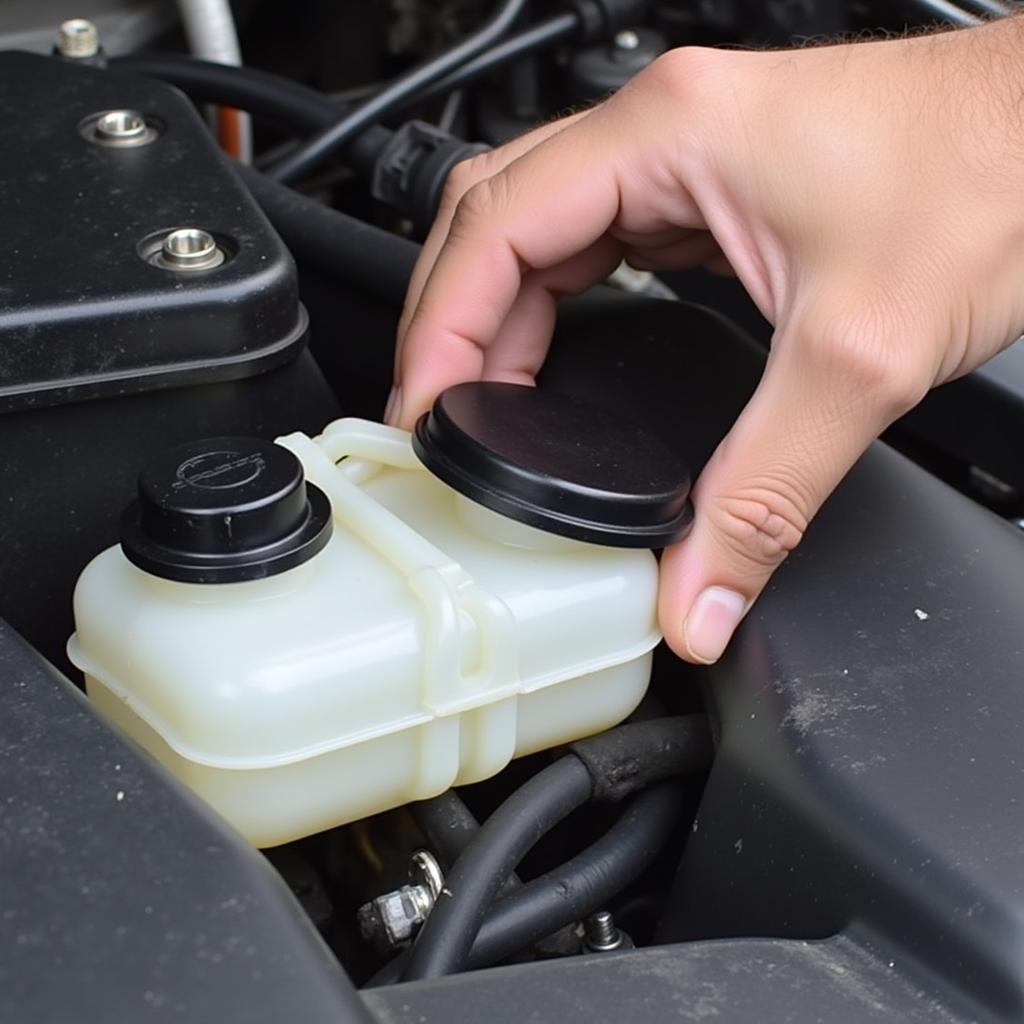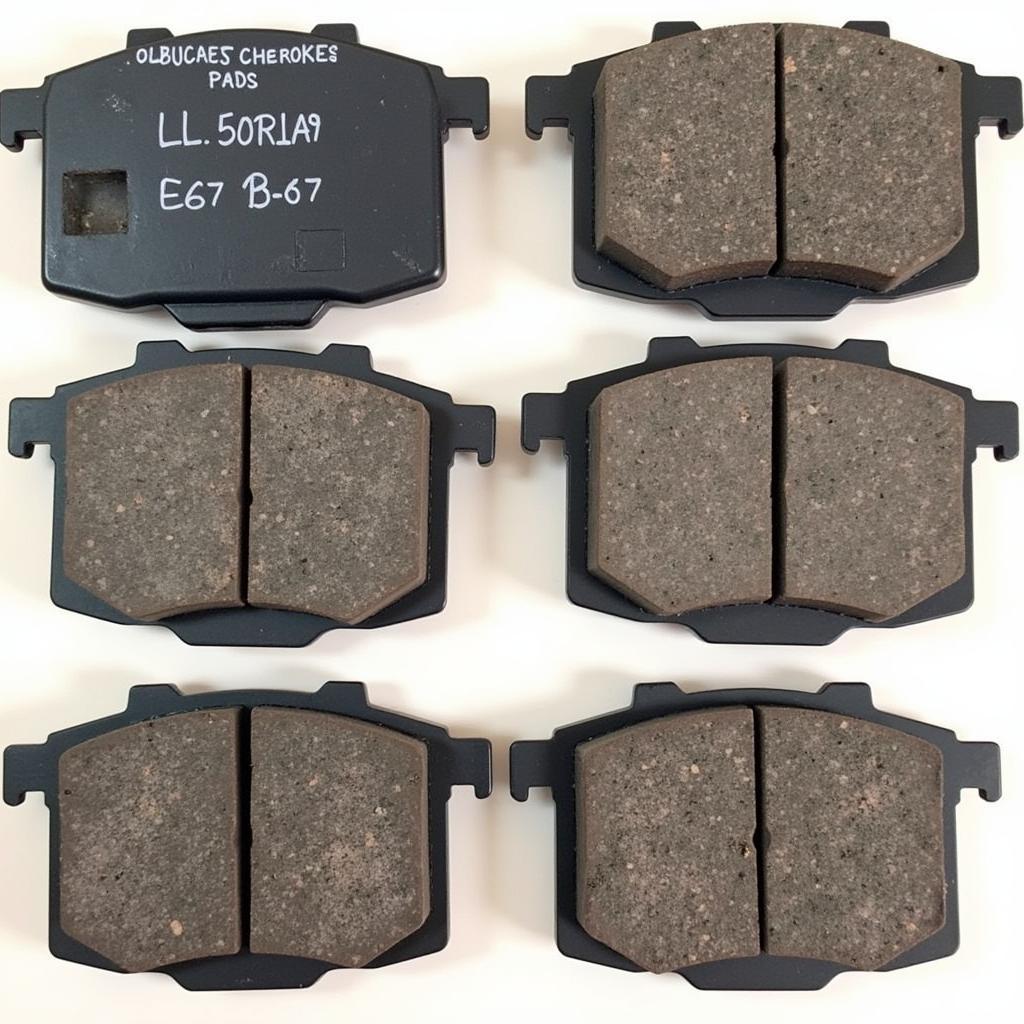The red brake warning light on your 2002 Jeep Grand Cherokee is a crucial safety feature that you should never ignore. It indicates a potential problem with your vehicle’s braking system, requiring immediate attention. Whether you’re experiencing a soft brake pedal, unusual noises, or the warning light simply won’t turn off, this guide provides a detailed walkthrough of common causes and troubleshooting steps.
Understanding the Red Brake Warning Light
The red brake warning light is connected to several components within your Grand Cherokee’s braking system. When illuminated, it could signal a variety of issues:
- Low Brake Fluid Level: One of the most common culprits is a drop in brake fluid. This could indicate a leak in the system.
- Worn Brake Pads: As brake pads wear down, the brake fluid level naturally decreases. If the pads are excessively worn, the warning light may illuminate.
- Faulty Brake Light Switch: The brake light switch activates the brake lights when you press the pedal. A malfunctioning switch can trigger the warning light.
- ABS Issues: Problems within the Anti-lock Braking System (ABS), such as a faulty sensor or control module, can trigger the warning light.
- Parking Brake Engaged: Though seemingly obvious, accidentally leaving the parking brake partially engaged can illuminate the warning light.
 Brake Fluid Reservoir
Brake Fluid Reservoir
Troubleshooting the Warning Light
Before proceeding, remember that working on your vehicle’s braking system can be dangerous. If you’re not comfortable performing these checks, it’s best to consult a qualified mechanic.
1. Check Brake Fluid Level:
- Park your Grand Cherokee on a level surface and engage the parking brake.
- Locate the brake fluid reservoir under the hood. Refer to your owner’s manual for the exact location.
- Visually inspect the fluid level. It should be between the minimum and maximum lines.
- Caution: Brake fluid is corrosive. Avoid contact with skin or paint. If the level is low, there might be a leak.
2. Inspect Brake Pads:
- Check the brake pad thickness through the wheel spokes.
- If the pads are thin or you see a groove worn into them, they likely need replacement.
 Worn Brake Pads on 2002 Grand Cherokee
Worn Brake Pads on 2002 Grand Cherokee
3. Check Parking Brake:
- Ensure the parking brake is fully disengaged.
4. Seek Professional Help:
- If the fluid level is consistently low, you suspect a leak, or the warning light remains on after these checks, it’s crucial to have a professional diagnose the issue.
“Ignoring a red brake warning light is like ignoring a flashing ‘danger’ sign. Addressing the problem immediately ensures your safety and prevents further damage to your vehicle.” – John Miller, ASE Certified Master Technician
Frequently Asked Questions
1. Can I drive my Grand Cherokee with the brake warning light on?
It’s highly discouraged. Driving with a potential brake system issue puts you and others at risk. Seek immediate attention from a qualified mechanic.
2. How much does it cost to fix a brake warning light issue?
The cost varies greatly depending on the underlying cause. A simple brake fluid top-up might cost under $50, while a complete brake system repair could exceed $1000.
3. How often should I check my brake fluid?
It’s a good practice to visually inspect your brake fluid level at least once a month and during regular maintenance checks.
4. Can I add any brake fluid to my Grand Cherokee?
No, use only DOT 3 brake fluid as recommended in your owner’s manual. Using the wrong fluid can damage your brake system.
5. Why is my brake pedal feeling soft?
A soft brake pedal can indicate air in the brake lines, a faulty master cylinder, or a serious leak in the system.
 2002 Jeep Grand Cherokee Brake System Diagram
2002 Jeep Grand Cherokee Brake System Diagram
Conclusion
The red brake warning light on your 2002 Jeep Grand Cherokee demands immediate attention. By understanding the potential causes and performing basic troubleshooting steps, you can ensure your safety and address any underlying issues promptly. However, if you’re ever in doubt, consult a qualified mechanic to diagnose and repair your vehicle’s braking system.

